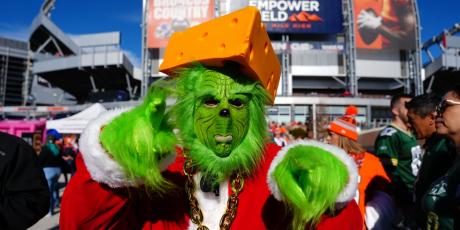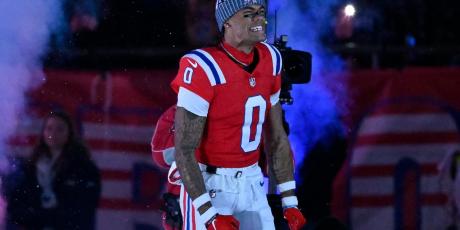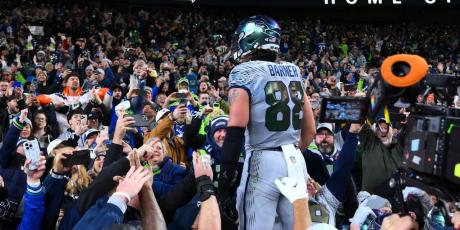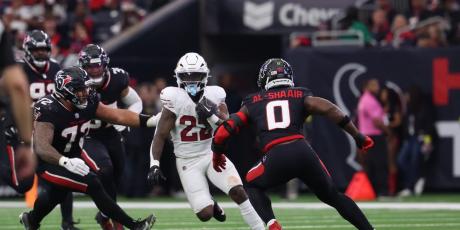IDP Draft Strategy Primer

With the NFL season closing in, it’s time to up our preparation a notch. Redraft fantasy leagues drafts are underway and will only continue to ramp up once we reach the pre-season (coronavirus allowing), before kicking into overdrive when we hit the third pre-season game - the one week that kind of actually matters.
If you are new to IDP leagues this primer will highlight some pointers you’ll want to factor into your equations before building your final draft board, and even if you have drafted a cornerback or two in your time, it never hurts to cram in that little bit of extra prep. As the old adage goes, if you fail to prepare, you’re preparing to fail…
Scoring and Player Types
As always with IDP leagues, and any fantasy league, to be honest, you need to be on top of your scoring system and how that impacts player values. If it feels like you’ve heard this before from me, or any other fantasy analyst for that matter, that’s good – it means you’re listening! If you take anything from this article I hope that it is that the single most important thing you can do before any fantasy season is familiarizing yourself with the league’s scoring system. It should be the first thing you do whenever you join any fantasy league as it impacts every player’s value and scoring potential.
Once you’ve got a firm grasp on how the league’s scoring works, the next step in dominating your IDP leagues is getting a firm handle on player types at each position. At defensive end there are 3-4 guys, 4-3 guys, run stoppers and double-digit sack artists, not to mention rotational rushers and situational players. More times than not, your focus should be on 4-3 guys with double-digit sack potential, and who will play upwards of 65% of snaps. Generally speaking, 4-3 ends are more volatile scorers than their 3-4 counterparts because they have less reliance on tackle totals for their scoring. In big-play leagues, this works in their favor, as when they do record multi-sack games they can be difference-makers, while in tackle-heavy formats the 3-4 ends who can break 50 total tackles in a season can push up well into the DL2 tier.
Don’t sleep on rotational guys though as high upside backups, especially in big-play scoring leagues. Mario Addison springs to mind as a player who made a career playing a limited snap count role for Carolina since 2016, racking up over nine sacks each season before finally locking down a more significant role in 2019. Rookies also can often find themselves in these situational roles, especially those not drafted in the first round, and can parlay those early season snaps into more significant time by the end of the season. A.J. Epenesa (Buffalo) and K’Lavon Chaisson (Jacksonville) in particular, both have upside and opportunity, although they lack the shine of ‘the best player in the 2020 draft’, Chase Young (Washington), so will not command the same draft stock. Looking a little further down the rookie rankings the likes of Yetur Gross-Matos (Carolina), Terrell Lewis (Los Angeles Rams) and Bradlee Anae (Dallas) all have clear routes to playing time if they can show they have what it takes to be an NFL caliber player.
Another way into finding value at defensive end is prioritizing players who have had a designation change in their position or switched defensive schemes, be it by a change in coaches, or a change in team. Typically, we’re looking for 3-4 OLBs to become 4-3 DEs, but there are 3-4 DEs who can switch to be a productive 4-3 DE too (Calais Campbell anyone?). Justin Houston is one of the best examples of this in recent seasons, and new Falcon, Dante Fowler (11.5 sacks last season) jumps out as a fringe DE1 option in 2020 following his free agency move to a 4-3 scheme in Atlanta.,
At linebacker, just like at defensive end, one of the key things to know is the base scheme the defense plays – 4-3 or 3-4. This is key because a 3-4 outside linebacker is a pass rusher in the same vein as a 4-3 defensive end, with the primary responsibility to disrupt the opposing quarterback. In most fantasy league setups pass rushing 3-4 OLBs like Khalil Mack and Von Miller are hugely devalued compared to their linebacking peers. The exception is, unsurprisingly, big-play scoring leagues as their 15-odd sacks can propel them into the LB2 tier, but, their scoring can be inconsistent from week to week, something I’d advise you to avoid when drafting IDPs.
Who Should You Target?
When it comes to ranking the fantasy value of the different linebacker positions, I would break it down as follows:
4-3 MLB > 3-4 ILB and 4-3 WLB >> 4-3 SLB >>> 3-4 OLB
Ideally, you’re targeting 4-3 middle linebackers, who marginally top 3-4 inside linebackers and 4-3 weakside ‘backers. These three positions are traditionally the team’s three-down linebackers, which is in itself a very important designation, and a key indicator of fantasy value. Linebackers asked to man the middle, inside and weakside tend to accumulate higher tackle totals as their on-field responsibilities tend towards stopping the run, and when they assume three-down or every-down roles on the defense they can break 100 total tackles.
In all but the deepest IDP leagues, I’d recommend scrubbing all 3-4 OLBs and 4-3 SLBs from your draft board, and even go as far as to only focus on three-down linebackers. This strategy gives your roster a high-floor scoring engine each week and allows you to be more aggressive in the draft or selecting your offensive starters that week.
Going one step further in the pursuit of the next breakout fantasy linebacker rather than simply selecting Bobby Wagner or Darius Leonard, look for players that show dynamic playmaking ability and have flashed big-play potential in more than one way. Being a 120 tackle guy who can add in a few sacks is great, but players who have shown a tendency to force a fumble as well, or have shown ability in coverage, can score fantasy points from such a variety of ways it’s hard for an opposing team to scheme them out of a game. For example, last year saw De’Vondre Campbell chart two interceptions, three forced fumbles and two sacks, enough to push him into the LB1 tier despite only recording 72 solo tackles.
At defensive back, it is the run stuffers who are the most highly prized players, even in big-play scoring leagues. Being able to consistently produce high-tackle numbers year after year makes them dependable and desirable (the same goes for Tampa-2 coverage corners asked to support the run), whereas roaming free safeties are reliant on making turnovers and cover cornerbacks need to be targeted regularly.
Traditionally, defensive backs who blitz often can have elite fantasy values, with future Hall-of-Famer Charles Woodson famously being one of the most memorable examples of such a stereotype. In his rookie 2018 season, Derwin James was utilized aggressively in the box and on blitzes which earned him a DB1 valuation as well as All-Pro and Pro Bowl honors. He subsequently earned a unanimous No.1 rank from us here in our defensive back rankings for 2019 and although he missed the season due to injury, the evidence is clear that aggressively used defensive backs are highly-prized fantasy assets. Last year’s sack leader for safeties was Jamal Adams with 6.5, and he tops our 2020 DB rankings, while James ranks fourth.
However, that hasn’t been quite the case in recent seasons for safeties in general, with many teams using more nickel formations to counter the league-wide shift to a pass-first game. By employing more nickel defense in reaction to three-wide sets on offense, as well as pass-catching tight ends such as Rob Gronkowski, Travis Kelce and George Kittle, there has been an evolution in the prototypical types of player used in varying defensive back roles.
There are ‘slot corners’ such as Chris Harris Jr and Desmond King who will be tasked with manning up with the elite receivers asked to move inside – this type of corner if blessed with ball-hawking skills can be among of the best fantasy corners in football. They are also some of the hardest players to identify pre-emptively, so you might be better served using the far simpler ‘rookie corner rule’ in finding your fantasy defense’s corners. If a rookie corner is deployed as a starter, they often have significant fantasy value as opposing teams will look to target them as much as possible. The more opportunity you have to score points, in all likelihood, the more points that player will score. Looking at this year’s rookie class, C.J. Henderson should see plenty of action seeing as the Jaguars have seen former starters Jalon Ramsey and A.J. Bouye leave in recent seasons.
The nickel corner/dime linebacker types are your Landon Collins’ and Kam Chancellors’ and again, they are some of the most valuable fantasy defensive backs – more often than not categorized as a safety. These players are happy taking on ball carriers near the line of scrimmage and are big enough to do so, but also have a skill set that allows them to cover those athletic tight ends that split the field. Because of their size/skillset blend, they are a rare breed, but worth their weight in fantasy gold.
Another factor in the value of defensive backs that is beginning to emerge is whether they see usage at linebacker in sub-packages, or even on occasions in base schemes. In recent seasons we have seen the Cardinals install Deone Buccanon as an inside linebacker for the majority of the season, and the Rams plugged in Mark Barron on the weakside after Alec Ogletree suffered a season-ending injury. The net result was that both players were top-ten options on all fantasy host sites that classified them as defensive backs, so keep a close eye on how teams are using their safeties during the pre-season, and also how sites are designating them.
Miscellaneous Trends
Once you’ve got a handle on player types and scoring systems, you can take another step towards winning your league by knowing about the variance in home stat crews in awarding tackles. The NFL does not define a tackle as an official statistic, so home stats crews award tackles based on a somewhat ambiguous definition, and the result is that some players rack up assisted tackles at a much higher rate than others, while other stat crews are freer with their awarding of solo tackles.
Looking ahead to 2020 based in the last few years of data, the most IDP-friendly home stat crews will be New England, Oakland and Pittsburgh. Defensive players on those teams get a slight boost in value, as will all visiting players on their travels. Stat crews to be slightly wary of include Cleveland, Dallas and Kansas City.
Don’t fret about owning multiple defensive players from one team either. The stack has become a strategy du jour in DFS games, and it’s not something that I’d get concerned with on fantasy draft day in IDP formats either. For example, I won’t be worried if I ended up owning the Chargers trio of Joey Bosa, Melvin Ingram and Derwin James.
And that’s it, folks! I’d like to think this primer has covered what you need to know in order to have a successful IDP draft. If there is anything else you need to know, or want to pick my brain, you can find me on Twitter at @RossMilesNFL.




















